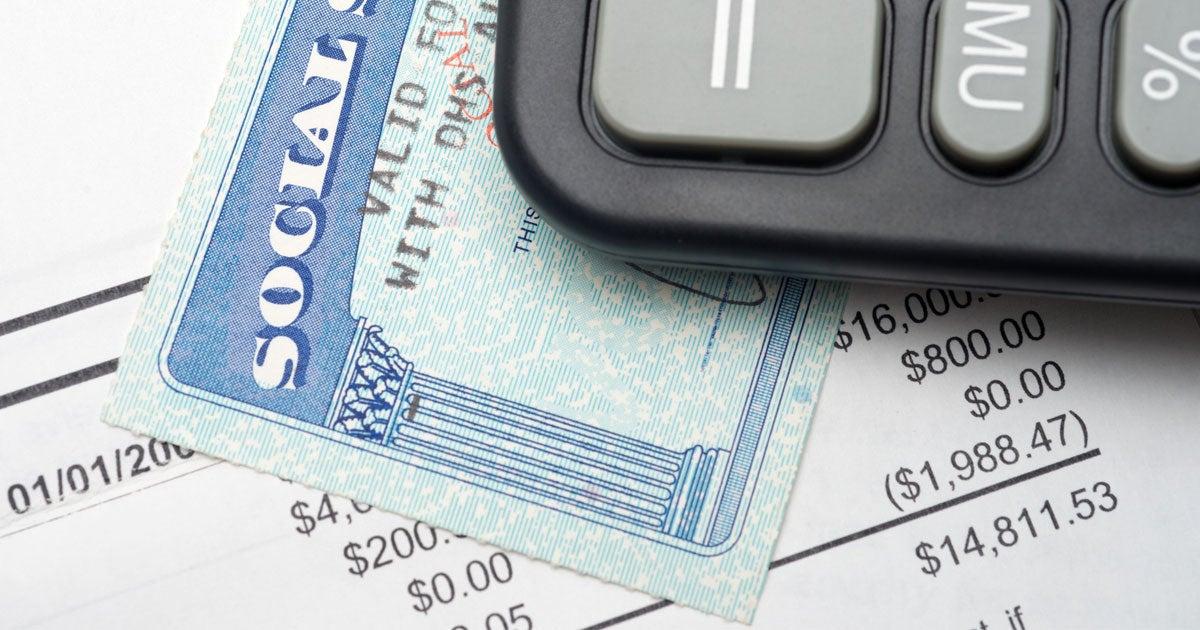
Related Topics
No one plans to lose their ability to work. But should it happen, Social Security Disability Insurance (SSDI) can help provide a financial safety net for workers who qualify.
Who is eligible for SSDI benefits? That’s an important question to ask, even if you don’t need SSDI benefits today. Learning about SSDI eligibility now can help you prepare for the future, should you or a family member ever need to apply for this type of financial assistance.
What is Social Security Disability Insurance (SSDI)?
SSDI is a federal program that provides monthly cash payments to people between the ages of 18-64 who have a qualifying work history and have a permanent disability. Those are the eligibility measures. In July 2025, the average monthly benefit was $1,580.1
Now, that’s a concise definition of the very detailed program, which the Social Security Administration runs. But it’s a good starting point because it highlights the key SSDI eligibility categories: work history and disability. Let’s explore these eligibility requirements, starting with work history.
How long do I have to work to qualify for SSDI benefits?
SSDI is an earned benefit. To qualify, you must have worked long enough, and recently enough, in jobs where you paid Social Security taxes on your income. This is how you earn Social Security work credits. To get SSDI, you will need a certain number of work credits.
What are work credits? Medicare expert Brandy Bauer, former Director of the National Council on Aging’s (NCOA) Medicare Improvements for Patients and Providers (MIPPA) Resource Center, says to think of them as “building blocks.” “Work credits are based on your total wages for the year. If you work and pay Social Security taxes, you earn one credit for a certain amount earned in wages, up to four credits every year. For 2025, you must earn $1,810 to get one Social Security credit, and $7,240 to earn the maximum amount of four credits,” she said.
So, to be eligible for SSDI, you’ll need a stack of these building blocks. How many credits will you need? That will depend on how old you were when you developed a qualifying disability.
The SSA offers this guideline: “Generally, you need 40 credits, 20 of which were earned in the last 10 years ending with the year your disability begins.”2
You can find out more about SSDI work credit requirements in What Are Social Security Work Credits? Bauer’s article includes a helpful chart that shows the number of work years needed based on when a disability begin.
How can I find out how many work credits I have?
Follow these steps to check your work credit status online:
- Go to the Social Security website.
- Create an account or sign in if you already have an account.
- Once you're logged in, your credit earnings are listed under “Eligibility and Earnings.”
If you're age 60 or older, you can find your work credit status on your Social Security Statement, which is mailed to you three months before your birthday each year. You can also request your Social Security Statement via mail by printing, completing, and mailing a “Request for Social Security Statement” (Form SSA-7004).
Now, let’s look at disability eligibility criteria.
How does the SSA define a disability?
The Social Security Act set a very strict definition of disability. To qualify for SSDI benefits, you must have a serious medical condition that:2
- Prevents you from engaging in work or other substantial gainful activity (SGA)
- Prevents you from doing the work you used to do
- Prevents you from adjusting to a new type of work
- Is likely to last a year or more, or result in death
“Because the [Social Security] Act defines disability so strictly, Social Security disability beneficiaries are among the most severely impaired in the country,” according to the SSA. “In fact, Social Security disability beneficiaries are more than three times as likely to die in a year as other people the same age.”
SSDI benefits are only for people who have a total and lasting disability. There are no payments for partial or short-term disability.2
What medical conditions qualify as disabilities under SSDI?
The SSA maintains an extensive list of medical conditions that may cause a disability. If your medical condition isn’t included there, the SSA will determine if it qualifies. It must be as severe as those listed.2
In 2023, the largest number of SSDI diagnoses (34%) came from the musculoskeletal system and connective tissue category.3
Is anyone else eligible for SSDI benefits?
The majority of SSDI beneficiaries are workers with disabilities. In July 2025, 8.1 million workers with disabilities received benefits.1 But payments went to roughly 1 million other eligible people.1 For workers with disabilities, the average benefit was $1,582.38, or $137.48 more than the average monthly SSDI benefit.
There are special rules for people who are blind or have low vision, are a surviving spouse or surviving divorced spouse, or are a child of a deceased SSDI beneficiary.
What other benefits can I get with SSDI?
You may be eligible for Supplemental Security Income (SSI) payments. SSI provides basic minimum financial assistance to older adults and people with disabilities (regardless of age) who have very limited income and resources. One out of every 11 SSDI beneficiary with a disability also gets SSI payments.3 You can read more about SSI vs. SSDI in our side-by-side comparison.
People receiving SSDI—and all older adults—may be eligible for other helpful support, too.
Martha, a 60-year-old Chicago resident, has a disability and receives SSDI benefits. But after paying her bills each month, she found she didn’t have enough money left to buy nutritious food. She visited food pantries when she could, but their hours and her health and transportation issues sometimes kept her from going.
Finding out she qualified for Supplemental Nutrition Assistance Program (SNAP) benefits changed that.
“It’s much better for me to have SNAP because I can go to the store when I want and I can get some fresh vegetables—asparagus, tomatoes, lettuce, you name it,” she said.
“There are public and private benefits programs that can help older adults pay for food, prescriptions, utilities, health care, and more,” NCOA’s Bauer said. “Unfortunately, much of this aid goes unclaimed. In fact, $30 billion in benefits is left on the table annually by people who qualify for assistance programs but are not enrolled.”
You can use NCOA’s free, confidential BenefitsCheckUp® tool to search for programs that can make a difference in your life.
What else should I know about SSDI eligibility?
Keep in mind that there many steps in the application process. You can learn more in our Guide to Social Security Disability Insurance Benefits.
You also may find these SSA resources helpful:
- Disability Benefits
- Disability Benefits | How You Qualify
- How You Earn Credits
- Benefit Eligibility Screening Tool (BEST)
How do I apply for SSDI?
When you’re ready, you can apply for benefits online or by phone. You can call the SSA at 1-800-772-1213 (TTY 1-800-325-0778), from 8 a.m. to 7 p.m. Monday through Friday. You can also apply at your local Social Security office.
The SSA has a checklist to help you gather the information you’ll need for your SSDI application.
Sources
1. Social Security Administration. Monthly Statistical Snapshot. July 2025. Found on the internet at https://www.ssa.gov/policy/docs/quickfacts/stat_snapshot/
2. Social Security Administration. “Disability Benefits | How You Qualify.” Found on the internet at https://www.ssa.gov/benefits/disability/qualify.html
3. Social Security Administration. “Annual Statistical Report on the Social Security Disability Insurance Program, 2023.” Found on the internet at https://www.ssa.gov/policy/docs/statcomps/di_asr/index.html



